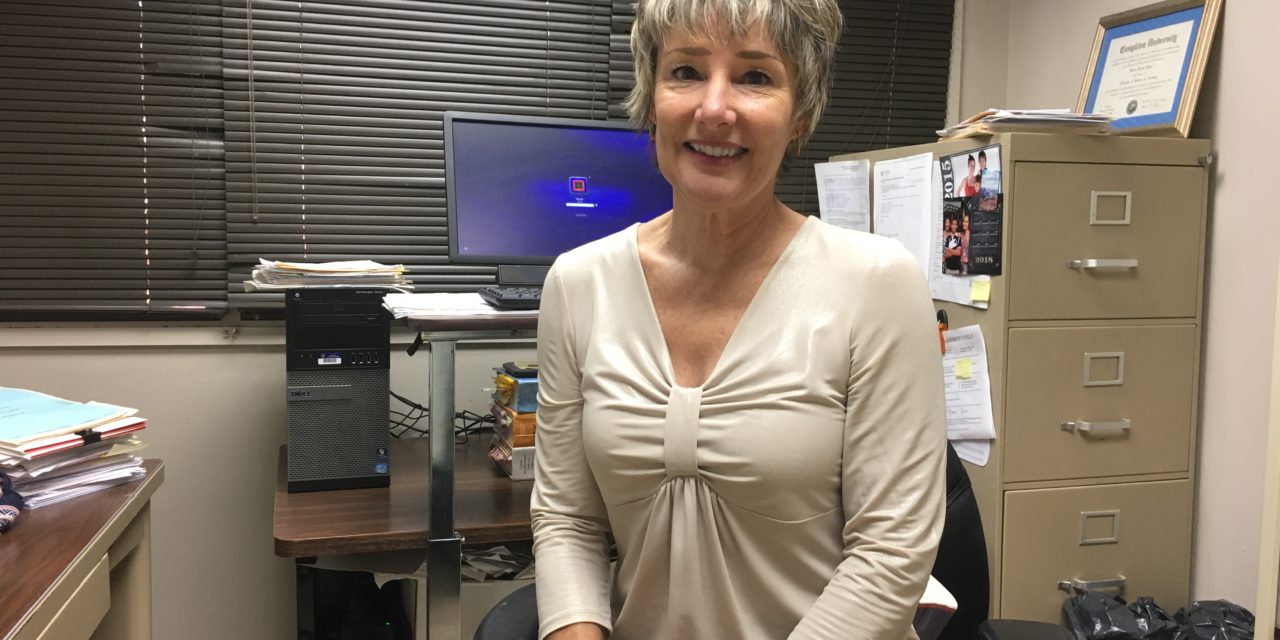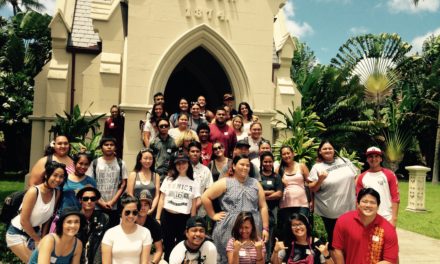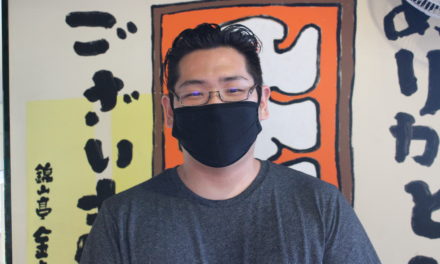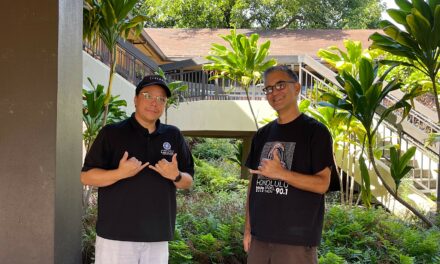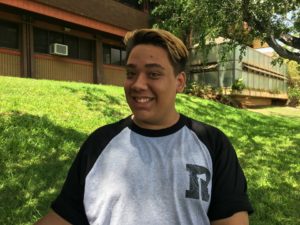By Katlin Cilliers | Staff Writer
Ask a Professor is a regular feature in which the Kapiʻo News will highlight the real-life careers and jobs that stem from areas of study at Kapiʻolani Community College.
Karen Boyer has worked in healthcare for almost 30 years. She is a registered nurse who holds a master’s degree from the University of the Philippines, and a family nurse practitioner master’s from the University of Hawaiʻi. Boyer decided to become a nurse after caring for pets in need in a veterinary hospital during her high school years. She said a lot of the care taking skills are similar when caring for those in need, whether it’s animals or people. In high school, Boyer was torn between teaching and nursing. Today, she feels lucky to have been able to do both.
Boyer has recently taught a Nurse Aid class, whose graduation ceremony happened last Friday (27). According to Boyer, these newly graduates can now join the workforce in fields such as home care, private duty, acute care or assisted living.
What is the difference between home care and assisted living?
Assisted living is where you move into a building place and in that place come a variety of services based on what you pay for. Home care, or private duty, you are in your [own] home. And either you pay, or your insurance pays, to have somebody come on a regular basis.
Can you elaborate on a nurse’s career path?
Yes, from nurse aid or certified nurse aid to LPN [licensed practical nurse], and again, [it takes] more education, more time. So the nurse aids make probably $12 to $18 an hour. Your practical nurse [LPN] is more like $20 to $30, $33 or so an hour. And then an RN [registered nurse] is really $50 and above, $50 an hour. … In the Nurse Practice Act, which the Board of Nursing oversees really in every state, LPNs have to be under the supervision of an RN or a doctor of some kind.
What kind of jobs can you get with a nurse aid qualification?
So a nurse aid, they can work in any of those. Actually, any nursing person can work in any of those [settings – home care, private duty, acute care, and assisted living]. So that’s nurse aid, 100 to 150 hours. . … And then we have the LPN program – licensed practical nurse. In our college, that’s one year. … And that program, you need a number or prerequisites for your zoologies, which pretty soon that’s going to become a physiology, PHYL here, rather than ZOOL. So you have to take the anatomy and the physiology, you have to take microbiology, you have to take a pharmacology, I think that’s it for the LPN Program. English 100, Math 100 or higher, and then there’s a test called a TEAS test that you have to take and it evaluates reading, analysis, math and science. … And they [LPNs] can work in really, any of those settings, too, plus clinics, like Hawai‘i Pacific Health or Straub, Kaiser has clinics. Both of those settings really want LPNs to work in their clinics.
What comes after becoming a registered nurse?
There’s the advanced practice, which is a master’s degree or higher. Yeah, so you see, there are all these levels. It’s pretty complicated. [Salaries] really varies, depending on their setting, how much they work, but their [APRNs] pay is probably fairly similar to RN pay. …
How do work tasks change and evolve in each nursing level?
The nurse aid is basic care. We call it ADLs – activities of daily living: feeding, bathing, walking, grooming, emptying containers, you know, helping with meals. … The LPN can oversee and do all that, and they can do medications and treatments, and that’s why clinics are really seeking the LPNs, because they can do all that. There can be a breathing treatment or an IV treatment of something. They can be trained to do phlebotomy.
What does a phlebotomist job entail?
Besides taking blood, reviewing the requisitions, getting the requisitions from the health care provider, or the doctor. … Patient walks in and they have these requisitions, and so the phlebotomist has to figure out what tubes those are, you know, get the patient comfortable, be sure they’re safe. Take the right tubes, the right amount [of blood] in the right tubes. Be sure the patient is okay. And then get those tubes to the proper place for storage or whatever. They can be read, I think they can get read there in the lab. I think it’s a pretty comprehensive [field]. I mean there’s a lot of jobs for that.
Besides overseeing all other jobs (LPNs and nurse aides), what else does a registered nurse do?
They really oversee the care of the patient. In acute care, but really everywhere, the RN is the eyes and the ears for the physician. The physician is with the patient for a short period of time. But the RN is there for all the time, so any changes in long-term care and acute care. Those people, they’re pretty fragile, you know. Like, you wouldn’t be in the hospital if you aren’t really sick. So, overseeing your ability to eat, tolerate medications, food, what your vital signs – which is your temperature, pulse and blood pressure – is your urine okay? Everything else, how is your skin. You know, people that can’t get around and move a lot, you know, they have – they’re at risk for skin breakdown. Overseeing all of the labs, the test results, to be sure that the physicians are communicating, doing the admission, doing the discharge.
Can you expand on the healthcare workplace culture?
I mean, there’s a communication culture, there’s a presentation culture. … You know when somebody says something, what do we say back? You can’t be defensive. You just have to say, “I’m sorry you feel that way, Mrs. So-and-So.” If people are aggressive, you can’ t be aggressive back, because people maybe are not in their best state of mind. Sometimes they’re confused and angry. We call it therapeutic communication. And so, it’s just easier if you have some experience in healthcare, to learn the culture of healthcare, the medical terminology, the procedures. How to deal with people that are not, again, not fully cognitive or angry or in some crisis.
What is the best and the worst part of your job?
Most people go into nursing because they want to help people. … I guess the best part is fulfilling a goal or something, to help people. And I guess the worst part is there are just times that the systems, or people or their health it’s never going to be good. … you know, bad things happen. Or people have made some really bad choices. … maybe the homeless, and the healthcare dollars that our state is spending for them, so you care for them in the hospital and you know, they’ve moved here from Tenessee, they have their $1,400 disability check. They come to Hawai‘i thinking that they want to live here, you know? And then you realize, there’s no way you’re going to fix them, you know? There is no fixing. They have made personal decisions, they have made lifestyle choices. Just the inevitability of a free choice society.
What would you say to a student who wishes to pursue a career in nursing?
It’s really hard work. … The pay is good, but it’s really hard physical work and you have to be able to use technology with all the electronic, medical records that are out. And you have to be able to talk to people. … In nursing, you have to be good at everything. You have to be good at computers, you have to be good at math, you have to be good at talking to people. And managing multiple things at one time. Because it isn’t that … ‘OK, I’m going to get all of these meds and nothing else is going to happen.’ It isn’t like that. I might be … running my meds but then so-and-so vomits, passes out, or blood pressure go down. I have to figure out what am I going to do with these meds, and I have to be sure that this patient is OK, too. You got to multitask a lot. And deal with a lot of people, and families and crises.
[To read previous Ask a Professor features, click here.]

